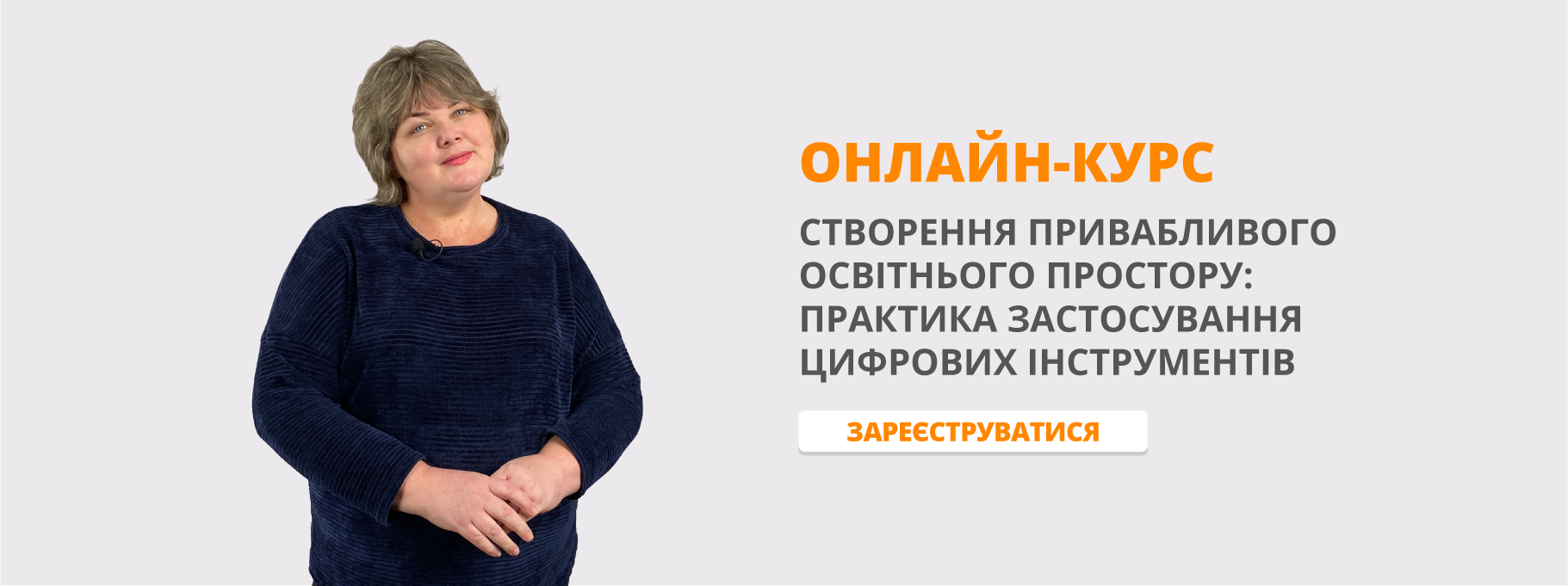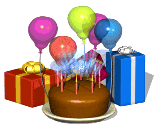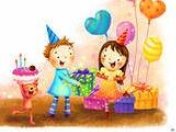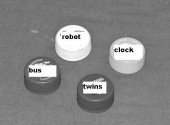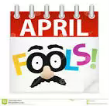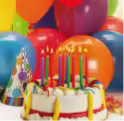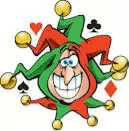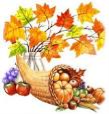Уроки на тему "Свята і традиції" з англійської мови 2 клас
Розробки уроків для учнів 2 класу на тему "Свята і традиції". Тема охоплюється повністю. Матеріал містить фонетичні зарядки, посилання на відео матеріали, тощо.
Розробки уроків
з навчальної теми «Свята і традиції»
Шишко Інни Петрівни
БСШ № 9
Урок англійської мови у 2класі за НМК Welcome 1 (Express Publishing)
Suggested level – Elementary
Урок формування умінь і навичок
Свята та традиції. День народження
|
Theme: |
Розвиток навичок читання та усного мовлення за темою «Свята та традиції». Робота за підтемою « День народження». |
|
Objectives: |
by the end of the lesson the students will be able to:
|
|
Materials: |
flashcards, ABC book, a computer, DVD Welcome 1, toys (watch, clock, car, CD, book…), sweets, Welcome 1 PB, Welcome 1 WB, costumes |
Procedure
- Warming up
T: Good morning students. How are you today?
S1: I am fine. I am bad. I am OK.
T: Let’s start our lesson. Firstly, repeat some sounds after me and recite our tongue-twisters (The teacher shows the cards with the sounds [b], [t], [f]. The students repeat all together):
|
Letter Bb sound [b]. I am busy, busy bee Says little busy bee. Little busy, busy bee, Bring some honey for my tea. |
Letter Tt sound [t]. Five o’clock – time for tea. Take your cup, come to me.
|
Letter Ff sound [f]. One, two, three, four, five. Five fish like to dive. One fish told me: “Let’s play in the sea!”
|
T: Well done!
- Main body
- Vocabulary revision
T: Look at the blackboard. How many pictures can you see? Let’s count!
Students (all together): 1,2,3,4,5,…
(Pictures: a ball, a car, a robot, a bat, a present, a clock, a CD, a book)
T:(points to the picture): What is this?
S1: This is a ball.
(The teacher points to the pictures and the students name them.)
T: Look! Some letters in the words below the pictures are missing. Your task is to write the missing letters.
|
|
|
|
|
|
|
C__ |
d__l |
b_ll |
_o_ot |
_oo_ |
(Students go to the blackboard and write the letters.)
- Learning the new vocabulary.
T: Today we will learn the new words. We will listen to the text about Eddy’s birthday and act out he dialogues. Open your PB p. 26 (Welcome 1) ex 1. Listen and repeat.
(The teacher plays DVD or a recorder, the students repeat the new words: robot, car, bus, twins, helicopter, aeroplane, clock)
T: Now open your heads and put the new words inside.
(The teacher shows the flashcards and the students repeat the new word and touch their heads trying to remember it)
T: You will listen to the text about Eddy’s birthday. Try to guess what Eddy’s present is. Look at the screen.
(DVD Welcome 1 Unit 4 ex.3 p.26)
T: What is Eddy’s present?
S1: It is a robot.
T: Let’s read this dialogue in roles and translate.
- Activation of the new vocabulary
T: Stand up, please. Make a circle. Turn on your ears.
(The teacher whispers a new word into the student’s ear. The student repeats it to his classmate’s ear quietly; the last student says it loudly and translates. You can repeat the words many times with the students so that they could remember them)
S1: Here is your present. – Ось твій подарунок.
S2: You are welcome. – Будь ласка.
- Presentation
T: Take your seats and look at the screen. Try to guess the phrases. (The teacher shows a slide or just some pictures and the students say the phrase):
|
S1: Happy birthday! |
S2: Here is your present!
|
S3: Open it and see! |
S4: It’s fantastic! It’s very nice! |
T: Let’s imagine that I have a birthday today and I want to give you some sweets.
(drilling of the phrases— Thank you/ You are welcome)
T: (gives a sweet): This is for you.
S1: Thank you.
T: You are welcome.
(The teacher gives the sweets to everybody)
- Matching
T: Come to me, please. Look! I have a “Magic sack”. There are many bottle caps here. But they are unusual. Take one, read the word and find the right picture. (You can take the bottle caps of different colours. The pictures you can put on the desk or stick in different places in the classroom)
|
|
(Every pupil takes the bottle cap, reads the word on it and finds the corresponding picture ) S1: It is a robot. S2: It is a bus. etc …
|
- Pair work. Developing speaking skills.
T: Who has got a yellow bottle cap? (The teacher can name any colour. Firstly, try to choose the pupil who has got good speaking skills)
S1: I have got.
T: You have a birthday today. (The teacher tells the students their roles and helps with the costumes:
A mother – puts a necklace, a father – puts a tie, a grandmother – puts a hat, a grandfather – puts a hat, friends – put birthday hats. The teacher gives the bags with presents. They can be real things or just toys – a watch, a pen, a parrot, a helicopter, ect.)
Students act out the dialogue
S1: Happy birthday, Diana! Here is your present!
S2: What’s this?
S1: Open it and see!
S2: Wow! It’s a watch! It’s fantastic! Thank you!
S1: You are welcome!
(Every student gives the present and says greetings.)
- Conclusion
- Evaluation
T: You’ve worked really hard at today’s lesson. Your marks are…
Open your daybooks and write your home task: ex 1, 3 p. 26 (PB) read and learn the new words.
- Summing up. Home assignment
T: Good bye. Have a nice day!
S1,2,3,4: Good- bye! Good -bye! Good -bye! Good- bye! Good -bye, my teacher! Bye! Bye! Bye!
Урок англійської мови у 2класі за НМК Welcome 1 (Express Publishing)
Suggested level – Elementary
Урок засвоєння нових знань
Свята та традиції. День народження
|
Theme: |
Усне введення лексичних одиниць за темою «Свята та традиції» |
|
Objectives: |
by the end of the lesson students will be able to:
|
|
Materials: |
flashcards, cards with the names of the months and seasons, 2 fly swatters, a ball. |
Procedure
- Warming up
T: Good morning, students. How are you today?
S1: I am fine. I am bad. I am OK.
T: What season is it now?
S2: It is winter.
T: What is the weather like today?
S3: It is cold. The sky is grey. It is frosty.
Phonetic drill
T: Let’s learn a new poem today. Repeat after me (the teacher shows the picture of a snowman and recites the poem):
I’m a little snowman round and fat,
Here are my mittens,
Here is my hat.
Add a little scarf and a carrot nose,
I stand so tall when the cold wind blows.
T: Now let’s repeat the poem line by line. (Then the teacher says the beginning of the line and the children end it. Finally, they recite the poem all together)
- Main body
- Revision of the vocabulary
T: Today we will talk about seasons, months and holidays.
T: How many seasons are there in a year?
S1: There are four seasons.
T: What are they?
S2: They are: winter, spring, summer and autumn.
T: Ok, now let’s recollect the months of the year.
Ss (all together): January, February, March, April, May, June, July, August, September, October, November, December.
T: Now take the card, read the name of the months and say if it is a winter month, a spring month, a summer month or an autumn month.
|
January |
February |
March |
April |
May |
June |
|
July |
August |
September |
October |
November |
December |
S1: January. January is a winter month.
S2: September. September is an autumn month.
(While pupils are talking about the months, the teacher is putting 4 sheets of coloured paper on different desks. There is a name of the season on each sheet of paper.)
T: Now divide them into groups. Think about the seasons and the months.
- Learning the new vocabulary
T: Great! You know that every season is famous for its holidays. Let’s learn the names of the holidays. (The teacher shows the flashcards and the children repeat the names of the holidays after the teacher): Christmas, New Year, Saint Valentine’s Day, April Fool’s Day, Easter, Birthday, Mother’s Day.
T: Now repeat very quietly!
T: Now repeat very loudly!
T: Now repeat and clap your hands!
- Game “Swat a word”
(The pictures of the holidays are on the board. The teacher gives the fly swatter to the person who is the first in a line.)
T: I’d like you to be divided into two teams. Take the fly swatter. I will say the holiday and you should swat a picture, and then pass the fly swatter on to the next person in the line.
(The teacher says the holidays and makes sure that everyone has a turn.)
- Game “ Telephone”
T: Make a circle. Turn on your ears.
(Teacher whisper s a new word in the student’s ear. The student repeats it in his classmate’s ear quietly; the last student says it loudly and translates. You can repeat the words many times with the students so that they could remember them.)
- Activating a new vocabulary.
- Game “Catch a ball”
T: Make a circle. We will throw the ball and ask each other about your favourite holidays. Ready! Steady! Go! (The teacher throws the ball first)
T: What is your favourite holiday?
S1: My favourite holiday is Christmas. (The student throws the ball to his / her classmate)/ What is your favourite holiday?
S2: My favourite holiday is my birthday.
- Matching
(The teacher puts the sheets of paper with the names of the season on the board and the students draw lines and explain.)
T: Now match the holidays and the seasons. Explain your choice.
S1: Christmas is in winter.
S2: April Fool’s Day is in spring.
S3: My birthday is in autumn. Etc.
- Reading
T: How many holidays are there described in the text?
It’s Christmas. We have got a Christmas tree in the living-room. We can read Christmas cards and sing carols.
It's New Year. Santa Claus brings presents. Wow! They are fantastic.
It’s Saint Valentine’s Day. We have cards and sweets. There are hearts everywhere.
It’s Easter. We have got eggs in the kitchen. We can paint Easter eggs.
It’s April Fool’s Day. We tell jokes and smile. We play tricks.
It’s my birthday. I have got a party in the dining-room. We can play games with my friends. I have got lots of presents.
It’s my Mother’s Day. My mother has got presents and flowers. She can make a cake in the kitchen. Oh, it’s very big!
S1: Eight.
- Game “Find a sentence with a word”
(The teacher says a word and the students should find it in the sentence, read it. Then the winner says the word. )
T: My word is “cards”.
S1: We have cards and sweets.
S1: My word is “smile”.
S2: We tell jokes and smile.
- Game “Read the text word by word”
(The game develops students’ attention, pronunciation and reading skills.)
- Conclusion
- Evaluation
T: You've worked really hard at today's lesson. Your marks are…
- Summing up/Home assignment
T: Open your daybooks and write down your home task: learn the names of the holidays.
The lesson is over. Have a nice day! Good-bye!
Урок англійської мови у 2класі за НМК Welcome 1 (Express Publishing)
Suggested level – Elementary
Урок застосування умінь і навичок
Свята та традиції. День народження
|
Theme: |
Активізація лексичних одиниць за темою «Свята та традиції» в усному мовленні. |
|
Objectives: |
|
|
Materials: |
PB Welcome1, “Magic sack”, tape recorder, Power Point Presentation, flashcards of the holidays, cards with the names of the holidays, a grammar table – the verb “to be” in Present Simple
|
Procedure
- Warming up
T: Good morning students. How are you today?
S1: I am fine. I am bad. I am OK.
Phonetic drill
T: Let’s learn a new poem today. Repeat after me (the teacher shows the picture of a Christmas tree and recites the poem). The poem is written on the board.
Christmas pudding, Christmas tree,
Christmas time is gay and free!
Christmas bells sing “Ding-dong!”
It’s a Merry Christmas song!
T: Now let’s repeat the poem line by line. (The teacher rubbers some words and the children should say them. The teacher does this until there are not any words on the board. But the children can recite a poem.)
- Main body
- Revision of the vocabulary
T: Let’s revise the names of the holidays. Look at the screen. (There are the pictures of the holidays. The children name them together.)
Ss: Christmas, New Year, Saint Valentine’s Day, April Fool’s Day, Easter, Birthday, Mother’s Day, Thanksgiving Day.
- Game “Magic sack”
T: Great! And now we will play a game. Look! I have got a “Magic sack” and there are words inside. Take the word, read it, think and put below the corresponding picture.
|
|
|
|
|
|
|
Christmas |
April Fool's Day |
Mother’s Day |
New Year |
Easter |
T: When is Christmas in Ukraine?
S1: In January.
T: When is Christmas in the UK?
S2: In December.
T: When is Mother’s Day in the UK?
S3: In May.
- Activating of the new vocabulary
- Game “Brainstorming”
The teacher writes “Ukraine” on one part of the board and “The UK” on the other part.
The children should listen carefully to the sentences and choose the country.
(You can put them between the rows and they can run to the correct name of the country.)
- The children get presents from Santa Claus. (The UK)
- People paint eggs and go to the church. (Ukraine)
- Children sing carols in January. (Ukraine)
- People give flowers and cards to their mums. (The UK, Ukraine)
- You can hear “Trick-or-treat”. (The UK)
- You can tell funny jokes and smile. (The UK, Ukraine)
T: Well done! So you see that we have lots of common traditions with the UK.
- Role play “Interviewers”
T: Open your PB (Welcome 1), page 27. Find ex. 4. What can you see?
S1: I can see a robot.
S2: I can see a doll.
S3: I can see a car.
T: I think they are presents on your birthday. Ask and answer. Start your question “Is it a …?” (The teacher moves her head and explains that the first word is “is”). Work in pairs.

S1: Is it a TV?
S2: No, it isn’t. It is a robot!
S3: Is it a doll?
S4: No, it isn’t. It is a teddy-bear!
- Speaking and grammar practicing
Look at the board and fill in the grammar table.
|
I |
|
seven. |
|
He |
|
happy. |
|
She |
|
my teacher. |
|
It |
|
big. |
|
You |
|
my friends. |
|
We |
|
sad. |
|
They |
|
twins. |
The children fill in with: am / is / are. (You can revise the usage of “am / is / are” singing a Ukrainian song “У лісі, лісі темному”)
Ex. 5 p. 27 – Match the parts of the sentence and write short forms of the verb “to be”
(The teacher writes short forms on the board and checks them in the students’ copy-books)
Now let’s read and translate the statements.
- Listening
Pre-listening
T: Look at ex. 6, p. 27 (PB). What holiday are the children celebrating?
S1: They are celebrating their birthday.
S2: How many children can you see?
S3: I can see three children.
T: Yes, they are Lin and her two sisters. Now you will listen about their birthday. Your task is to put a tick or a cross. Let’s read the statements and translate them.
While-listening
Tapescript
Lin: This is Tarra and this is Tikko. They are my sisters!
Cindy: Are they twins?
Lin: Yes, they are! It's their birthday today.
Cindy: How old are you today?
T&T: We are seven!
Cindy: Look at all your presents. Are you happy?
T&T: Yes, we are.
(Answers: 1 x, 2 v, 3 x, 4 v)
(The pupils listen and put ticks or crosses accordingly. Check pupils’ answers)
Post-listening activity
T: Now ask and answer. Work in pairs.
S1: Are Tarra and Tikko Wendy’s sisters?
S2: No, they aren’t. They are Lin’s sisters.
S3: Are they twins?
S4: Yes, they are.
- Conclusion
- Evaluation
T: You've worked really hard at today's lesson. Your marks are…
- Summing up/Home assignment
T: Open your daybooks and write your home task: ex. 6, p. 27 (PB) write the questions and the answers in your copy-books. The lesson is over. Good-bye!
Урок англійської мови у 2класі за НМК Welcome 1 (Express Publishing)
Suggested level – Elementary
Урок систематизації знань, умінь, навичок
Свята та традиції. День народження
|
Theme: |
Систематизація лексичних одиниць та граматичного матеріалу за темою «Свята та традиції. День народження». Написання вітальної листівки. |
|
Objectives: |
|
|
Materials: |
PB Welcome1, WB Welcome 1, DVD Welcome 1, flashcards, bottle caps, toys, |
Procedure
- Warming up
T: Good morning students. How are you today?
S1: I am fine. I am bad. I am OK.
Phonetic drills
T: We’ll have our phonetic exercises. Listen and repeat.
|
[k] Christmas pudding, Christmas tree, Christmas time is gay and free! Christmas bells sing “Ding-dong!” It’s a Merry Christmas song!
|
[r] Three grey rabbits in the grass Grow roses for us
|
|
[i:] I scream, you scream, we all scream for ice cream!
|
[b] If you want to buy, buy, if you don't want to buy, bye-bye!
|
T: Can we associate each poem with the holiday?
Ss: Yes, we can.
S1: As for me, the poem about the pudding associates with Christmas.
S2: I think, the poem about three rabbits associates with Mother’s Day.
S3: The poem about ice cream associates with April Fool’s Day.
- Main body
- Vocabulary practice
T: Let’s revise the names of the holidays. Look at the screen. (There are the pictures of the holidays. The children name them together.)
Ss: Christmas, New Year, Saint Valentine’s Day, April Fool’s Day, Easter, Birthday, Mother’s Day, Thanksgiving Day.
- Game “Missing letters”
T: Great! And now we will play a game. Look! There are some pictures on the board and the words. But some letters are missed. You should write them.
|
|
|
|
|
|
|
B_rt_day |
_pril _ool's _ay |
M_ther’_ Da_ |
Ch_istm_s |
Tha_ks_iving D_y |
- Grammar practice
- Game “Mixture”
T: Look! I have got lots of bottle caps. They are of different colours. There is a word on each bottle cap. Your task is to make up a sentence with the bottle caps. (The teacher says the children’s names and the colour. The children choose the bottle caps of this clolour and try to make up a sentence working together.)





- Mother’s Day is in May.
- Christmas is in winter.
- April Fool’s Day is in April.
- Easter is in spring.
- Thanksgiving Day is in November.
- New Year is in January.
- Role play “Interviewers”
- T: Now we’ll play another game – “Interviewers”. You will interview your classmates about their favourite holidays. (The teacher gives the students special cards with the written names of the holidays. There are two columns on the cards Yes / No. The students ask the questions, listen to the answers and put a tick in the corresponding column. )
S1: Do you like Christmas?
S2: Yes, I do. Do you like April Fool’s Day?
S3: No, I don’t.
T: Stop! Take your seats.
T: How many students like Christmas?
S1: 10 students like Christmas. (The teacher writes the number below the picture of Christmas on the board.)
- Listening
Pre-listening
T: Look at ex. 1 on p. 28 (PB). What can you see?
S1: I can see cards.
S2: I can see presents.
S3: I can see balloons.
T: You are right. Now you will listen to the speaker and your task is to understand what holiday they are referred to.
While-listening
Tapescript
- Dear Cindy! You are twelve today! Happy birthday!
Wendy
- Best wishes on your birthday!
To Cindy with love from Lin!
- With love to you! Happy Birthday!
Love, Oscar
T: Children write these cards to Cindy, because she celebrates …
S1(finishes the teacher’s phrase): her birthday.
Post-listening activity
T: Now ask and answer. Work in pairs. Ex. 2 on p. 28 (PB)
S1: How many cards are there?
S2: Three.
S3: How old is Cindy?
S4: Twelve.
T: The other exercise is also – listening. Ex. 3 on p. 28 (PB) Listen and write a name or a number.
Tapescript
Sherine: Hello, what’s your name?
Ben: My name is Ben.
Sherine: How do you spell it?
Ben: B-E-N.
Shezne: How old are you Ben?
Ben: It's my birthday today, I'm thirteen.
Sherne: Happy birthday Ben!
Ben: Thank you.
- Relaxation
Song “I can sing and I can dance”
- Writing
T: Open your WB on p. 18, ex. 8. Fill in the gaps.
T: Act out this dialogue.
(The teacher puts a toy in the bag and the children act out the dialogues.)
T: Great! But if you want to congratulate somebody on his/ her birthday you should write greeting cards. Today we’ll try to write our own cards using an example in the PB.
Ex. 1 on p. 28 (PB) – read and translate.
Find Photo File Section 4, look and write your congratulations. You should write your friend’s name and your name at the end of the letter.
- Conclusion
Evaluation
T: You've worked really hard at today's lesson. Your marks are…
Summing up/Home assignment
T: Open your daybooks and write down your home task: make your own birthday card. The lesson is over. Good- bye!


про публікацію авторської розробки
Додати розробку
